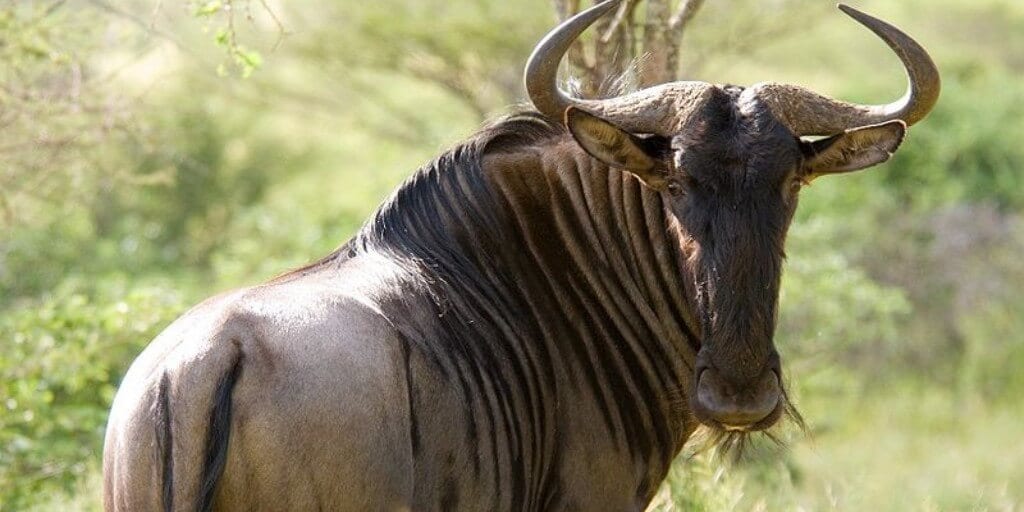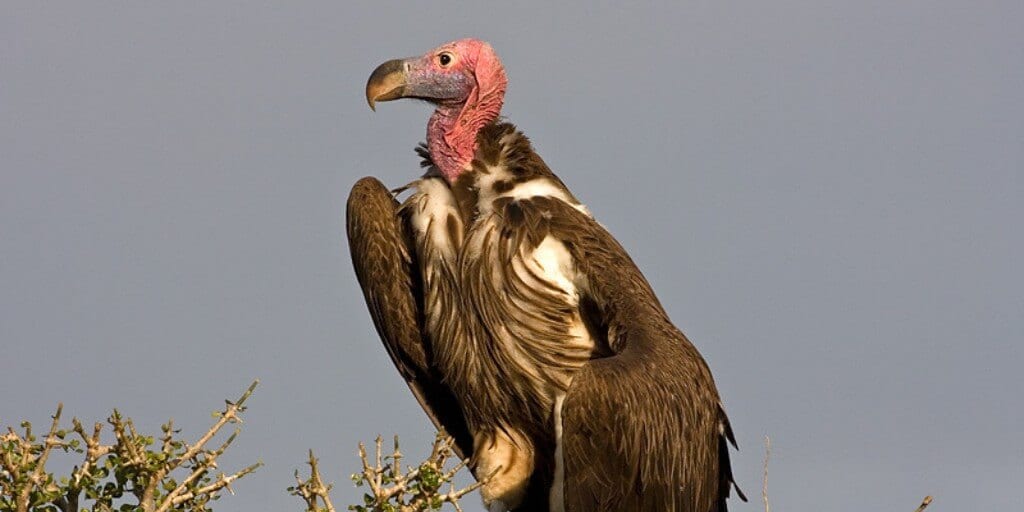The ugly five animals of Africa are Hyena, Marabou Stork, Vulture, Warthog and Wildebeest
If you’ve been on safari you’ll probably be aware of ‘the big five’ of buffalo, elephant, leopard, lion, and rhino. You may also be aware of the little five, or small five animals – rhinoceros beetle, buffalo weaver, elephant shrew, leopard tortoise, and the antlion.
However… did you know that there’s also a group of safari animals that have been unfortunately christened ‘the ugly five’? Sad but true, the ugly five are made up of hyena, wildebeest, vulture, warthog and the marabou stork. They may be considered ugly animals, but each is beautiful in their own way, and all are relatively common throughout southern and eastern Africa – so make sure you keep an eye open for them when you’re next on safari.
1. Hyena

There are four species in the hyena family, varying in size. Hyenas are unique and vital components of most African ecosystems, both taking advantage of other animals’ kills for easy meals and hunting themselves. The size of a hyena kill or scavenge is generally determined by the size of the hyena’s clan, which can run to dozens. They often hide extra food in watering holes, since nothing is wasted. Hyenas will eat every part of an animal, including bones and hooves.
Hyenas can adapt to almost any habitat and are found in grasslands, woodlands, savannas, forest edges, sub-deserts, and mountains.
2. Marabou Stork

Marabou storks one of the most distinctive birds found in Africa south of the Sahara – and one of the world’s biggest birds (definitely not found in our list of world’s smallest birds!). They are found in both wet and arid habitats, often near human habitation, particularly landfill sites.
They’re an unusual looking bird, bald-headed with wisps of hair, perhaps worthy of their addition to the ugly five. They have a wingspan of 2.6 meters and a height of 1.5 meters. Interesting maribou stork fact: they have hollow leg and feet bones, an adaptation to help them fly
Marabous are scavengers eating anything from termites, flamingoes, and small birds and mammals to human refuse and dead elephants. They also feed on carcasses with other scavengers such as vultures and hyenas.
3. Vulture
Vultures are scavenging birds of prey, who love nothing more than to pick on carcasses of dead animals on African plains. Africa supports 11 vulture species, of which size are confined to the continent only. Sadly seven of these 11 vulture species are categorised as endangered or critically endangered African animals.
Vultures are affectionately known by nature-lovers worldwide as ‘Nature’s Clean-up Crew’. They’re one of nature’s most successful scavengers, and help clean the African landscapes like no other.
4. Warthhog

Warthogs are normally found in family groups, where they spend most of their time either looking for food or wallowing in the mud at waterholes. At night they shelter in burrows, entering tail first.
Warthogs have a wide distribution across sub-Saharan Africa, with a preference for open woodland and savannahs, and are not endangered.
5. Wildebeest

Wildebeest are primarily grazers, enjoying the grass, and the occasional shrub and herbs, living in herds of between ten and many thousands. They’re characterised by a long black mane and a beard of hair hanging from the throat and neck, along with their short curved horns, with males weighing up to 250kg.
Their preferred habitat is open grasslands, with their renowned seasonal migration being an optimised survival strategy giving them access to and use of resources over huge areas, minimising over-grazing during both wet and dry seasons.
Other wildlife ‘fives’
Have you seen the ugly five animals and are are looking for a new wildlife challenge? For safari aficionados up for ticking all the ‘I’ve seen’ boxes, have you heard about the other groups of 5 animals?




World’s Ugliest Fish
Ugly Animals
Best Places For The Big 5 In South Africa
The Big Seven Animals – What They Are & Where To See Them
What Are ‘The Ugly Five’ Animals?
What Are ‘The Shy Five’ Animals?